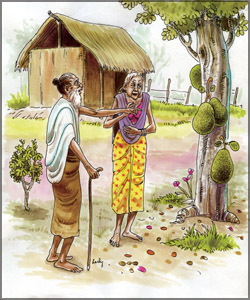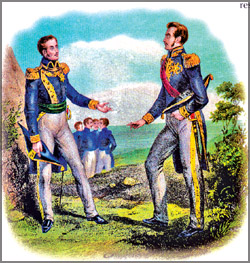|

Sounds that deafen
Excessive noise can cause alteration in
cardio-vascular, endocrine and neurological functions:
Hemjit Bharathan
Did you know that a great deal of our irritation, impatience and
short-temperedness might be due to the excess noise thrust upon us?
Rules on ‘Noise Pollution’ are blatantly violated. In the city,
sounds from automobiles, railways, aircrafts, loud speakers, amplifiers,
construction equipment like bulldozers and piling machines exceed the
level considered healthy for humans.
The health hazards are numerous. A burst of noise from a passing
truck alters our cardio-vascular, endocrine and neurological functions.
Thus prolonged exposure to noise can result in hearing loss,
indigestion, heartburn, ulcers, blood pressure and heart diseases.
It would be wise to know some facts and rules on Noise Regulation and
Control. Power amplifiers should be directed to the audience only and
not into the street as is commonly done.
Music and all other public address systems should be controlled and
adjusted to cover only the spectators’ area. It should be restricted to
only five decibels above the ambience level.
The Union Ministry of Environment in India has prescribed 55 db in
residential areas during daytime and 45 db at night. Loud speakers are
strictly prohibited in silent zones.
A silent zone is an area around 100 metres of hospitals, educational
institutions and courts.
However, all these laws are blatantly violated.
Ignorance makes us suffer nerve-wracking sounds. Sometimes law
enforcers themselves turn violators when they resort to loud speakers
and amplifiers.
Next time you are bulldozed remember it is within your right to
protest.
Folk tales of Sri Lanka:
How jak fruit became ‘Herali’
Retold by R. S. Karunaratne
The country was undergoing a difficult time. There was not enough
food for a great number of people, causing illness and death. Water was
scarce as the country did not get rains for many months.
The king received many reports that his countrymen were dying of
famine. Thousands of poor people prayed to gods for rain and a morsel of
food. When the people were suffering and praying, a strange thing
happened in heaven where gods were enjoying perfect happiness.
 People
believed that anyone who did good deeds in the world and passed away
were born as gods in heaven. Millions of ordinary gods were leading
carefree lives eating and drinking merrily. However, God Sakra who was
the king of gods could not sit in his throne as it was getting hot every
minute. People
believed that anyone who did good deeds in the world and passed away
were born as gods in heaven. Millions of ordinary gods were leading
carefree lives eating and drinking merrily. However, God Sakra who was
the king of gods could not sit in his throne as it was getting hot every
minute.
Then he looked down from heaven to see what was happening in the
world below. God Sakra saw that people in Sri Lanka were suffering from
many diseases and they had nothing to eat or drink.
God Sakra descended from heaven disguising himself as an old beggar.
He decided to visit a little hut in which an old woman was praying gods
for food and rain.
The old beggar stood in front of the hut and begged the woman for a
morsel of food. The old woman who could not speak due to thirst and
hunger told the beggar that there was no food or water in her hut using
sign language.
“Mother, there is a jak tree behind your hut. Go and pluck one of the
ripe fruits and boil it. But you mustn’t eat it until I return,” said
the old beggar walking into the jungle.
The old woman plucked a jak fruit and removed its edible parts and
started boiling them. After some time the boiling jak fruit gave out a
sweet aroma. The old woman could not resist the temptation of eating one
or two boiled pieces.
When the old beggar re-appeared at the hut, he sensed that the woman
had eaten all the boiled fruit leaving nothing for him.
Then he shouted at the old woman by saying that she was a “Herali” (a
woman thief).
The old beggar went away. Soon the news spread in the village at
first and in the whole country that jak was an edible fruit. Until then
nobody knew that jak fruit was a nutritious food.
Today jak fruit is known in Sri Lanka as “Herali” following God
Sakra’s angry words uttered to the old woman.
Young Scribes:
My trip to Kataragama
Thaththi, Ammi and myself went to Kataragama last week. We left home
early in the morning. On the way we went to Udawalawa to watch the
elephants.
We saw Chandrika wewa in Embilipitiya. We bought dodol from a shop in
Hambantota. We bought a toy for me too.
We had soft drinks at a place closer to Salt Pans in Hambantota.
We reached Kataragama at about 1.00 p.m. In the evening we went to
Kiri Vehera. Next day, we went to Sella Kataragama. At kovils, we
offered fruits. We put up in the Tourist Board Rest House at Kataragama.
On the third day, we left for Colombo.
Hiruni Vidanapathirana
Gr. 2
Ceylinco Sussex College,
Kuliyapitiya
Thoughts that helped make the world better:
The colonies revolt
European colonial rulers were often dishonest. Taxes were high and
trade with other countries was often forbidden. Most important, colonial
people had no voice in their own government.
In 1800, most European colonies were in Latin America. Latin America
is a cultural region south of the United States that has been strongly
influenced by Spian, Portugal, and France.
Haiti
Revolution against a colonial ruler first broke out on the island of
Hispaniola. In the French colony of Saint Domingue, enslaved Africans
worked on coffee and sugar plantations. News of the French Revolution
electrified them.
|

Simon Bolivar |
In 1791, an army of 100,000 slaves drove out the plantation owners.
This slave army was led by Toussaint’ L’Ouverture (too SAN loo ver
TYUR), a former slave. L’Ouverture forced the French to abolish slavery
and took control of the colony’s government in 1796.
In 1802, Napoleon sent an army to reestablish French rule in the
colony. toussaint defeated the French, but he was captured.
Nevertheless, the colonists established the independent country of Haiti
in 1804.
1. What separates Haiti from South America?
2. Which European country claimed the most land in the area?
3. Which is the largest island in the Caribbean Sea?
Revolution in Mexico
Mexico was the richest of all the Spanish colonies in the Americas.
However, more than half of its wealth was sent to Spain every year,
leaving most Mexicans very poor.
The Call of Dolores
In 1810, a poor Mexican priest named Miguel Hidalgo told the people
in his small church in the town of Dolores that it was time for Mexicans
to improve their own lives.
His speech, known as The Call of Dolores, inspired his listeners.
Hidalgo demanded equality for all people,
|

Boliver met San Martin in Ecuador in 1822 |
including the Native Americans and mestizos, the people of
mixed European and Mexican ancestry. Hidalgo also opposed slavery, which
gained him support from Mexicans of African descent.
A crowd, armed mostly with clubs or pitchforks, marched out of
Dolores. As they marched, they were joined by thousands of others. A
well-armed Spanish army stopped them on the road to Mexico City, and
Hidalgo was captured and executed.
Another priest, Jose Maria Morelos carried on the struggle. In 1813
he called the first national congress and declared Mexico independent
from Spain.
However, in 1815 Morelos, too, was executed by the Spanish.
Independence at Last
In 1821, the cause of the Mexican revolution was taken up again by
Agustin de Iturbide He was an officer in the Spanish army that had
fought Hidalgo and Morelos.
Iturbide, a skilled military leader, was able to defeat the Spanish.
Eleven years after Father Hidalgo first rang the bell of his church in
Dolores, Mexico was free.
Iturbide turned out be more ambitious than patriotic. In 1822 he
declared himself Emperor of Mexico and dismissed the Congress.
Mexico was free from Spain, but it would be a long time before the
Mexican people were given a say in their government.
Independence in South America
The struggle to free Latin America from Spanish rule was long and
hard. It was not until 1830 that the Spanish speaking countries of Latin
America were free of Spanish rule.
Jose de San Martin
Napoleon Bonaparte invaded Spain in 1808 and replaced the king with
his own brother.
This change of government in Spain encouraged the people of Latin
America to revolt against Napoleon’s Spanish government.
Freedom came first in the south. In 1816 the people of Argentina
drove the Spanish forces out of their country.
An Argentine general named Jose de San Martin led this fight for
freedom. San Martin had been a Spanish officer, and he used his skills
to win Argentina’s independence.
Another Spanish army was in Chile, which is separated from argentina
by the tall peaks of the Andes Mountains.
Spanish leaders in Chile believed that the Andes were like a wall
protecting them from San Martin’s army.
San Martin knew what the Spanish leaders thought, so he trained his
army to do the impossible - to cross the Andes.
In one of military history’s great successes, he led his army across
the snow-and ice-covered peaks.
He surprised and defeated the more powerful Spanish forces and freed
Chile.
The grateful people of Chile offered to make San Martin their
president. He refused in favour of Bernardo O’Higgins, a Chilean general
who had helped San Martin.
Bolivar and Independence
In the northern part of South America, Simon Bolivar started the war
for independence in 1810. By 1813 he had driven the Spanish out of
Venezuela. A year later, a Spanish army returned and defeated Bolivar,
who had to flee for his life.
Bolivar did not let this defeat stop the fight for Venezuela’s
independence.
In 1817 he returned to Venezuela and led an army against the Spanish.
The Spanish troops were defeated, but Bolivar was not finished. He was
determined to free all of South America from Spanish rule. In 1819
Bolivar crossed the Andes into present-day Colombia where he defeated
the Spanish forces. In 1821 he returned to Venezuela and won another
victory against Spanish forces.
The Generals meet
The only part of Latin America still held by the Spanish in 1821 was
the present-day countries of Peru and Bolivia. San Martin attacked the
Spanish from the south while Bolivar captured the city of Guyaquil.
In Guyaquil, which is now in Ecuador, the two generals met to decide
how to free Peru. What happened at this historic meeting in 1822 remains
a mystery. No one knows what the generals discussed. After the meeting,
San Martin left Peru and resigned from the army. He lived the rest of
his life in France.
Bolivar went on to win freedom for Peru. Despite his great victories,
he was a very unhappy man when he died in 1830. Spanish rule had ended,
but the people of Latin America were not free. They had exchanged
Spanish rule for dictators from their own countries. Freedom was still
many years away for the people of Latin America.
To be continued |

